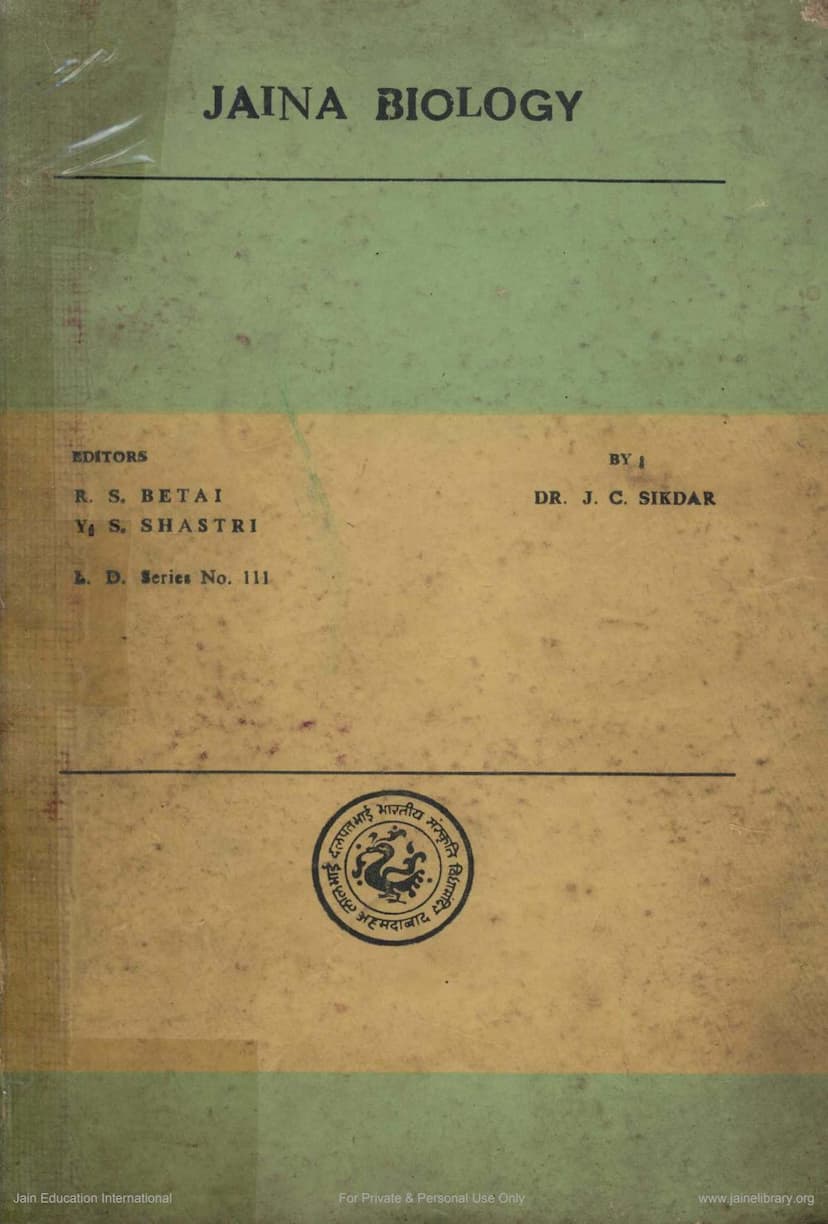Jaina Biology
Added to library: September 2, 2025

Summary
This book, "Jaina Biology" by Dr. J.C. Sikdar, aims to present a comprehensive overview of biological concepts as understood within the Jain tradition, viewed through the lens of modern biological science. The editors highlight Jainism's rich contributions to philosophy, poetry, grammar, and ethics, and posit that this work demonstrates a similarly unique study of the sciences.
The preface emphasizes that Jaina Biology is not merely a compilation of botany and zoology but a unified body of facts and theories rooted in the Jain philosophical concept of the spiritual value of all life. The introduction and early chapters focus on the similarities of life processes across all organisms, starting with the Jain concept of "Nigodas" (micro-organisms).
The book delves into various aspects of biology, covering:
- Introduction: Outlines the biological sciences, the scientific method as applied in Jaina tradition, and key generalizations.
- Chapter 1: Cell Structures and Functions: Discusses the fundamental fabric of life, characteristics of living things, cells and tissues, and cellular metabolism. It introduces the Jaina concepts of "paryapti" (vital force) and "prana" (life force) and attempts to correlate them with modern biological ideas like protoplasm.
- Chapter 2: The World of Life: Plants: Covers biological interrelationships, general properties of green plants, the structure and functions of seed plants, various types of plants (from trees to bacteria and algae), and the evolution of plant reproduction. It also touches upon plant anatomy, physiology, and ecological interactions.
- Chapter 3: The World of Life: Animals, Classification of Animals: Surveys lower invertebrates (two-sensed to four-sensed) and vertebrates (five-sensed animals), detailing their structural and functional peculiarities. It includes a classification based on structural similarities, sense organs, origin, and development, covering groups from protozoa to mammals, including humans.
- Chapter 4: The Organization of the Human Body: Provides a detailed description of the human body's organ systems, including the circulatory, respiratory, digestive, excretory, integumentary, skeletal, muscular, nervous, sense organs, and endocrine systems.
- Chapter 5: Reproduction - Asexual and Sexual, Human Reproduction and Embryonic Development: Discusses the mechanisms of reproduction, human reproductive processes, and embryonic development, drawing parallels between Jain and modern concepts.
- Chapter 6: The Mechanism of Heredity: Explores the physical basis of heredity and inheritance in humans, touching upon concepts related to genetic transmission.
- Chapter 7: Evolution of Organic Life in Jaina Biology: Examines principles of organic evolution, evidence for evolution from Jain texts, principles of ecology, and adaptation. It discusses the concept of organisms evolving and adapting to their environments.
- Chapter 8: Conclusion: Provides a survey of plant and animal kingdoms as presented in Jaina literature, viewed in the context of modern biology. It highlights the Jain view on the unity of life, the concept of vital force (paryapti), and the presence of biological knowledge, albeit without modern scientific verification.
Throughout the book, the author, Dr. J. C. Sikdar, attempts to bridge ancient Jain biological understanding with contemporary scientific findings, acknowledging the limitations in direct comparison but emphasizing the underlying philosophical insights and observational depth of the Jain tradition. The work highlights the Jain emphasis on animism and non-violence as foundational to their biological studies.